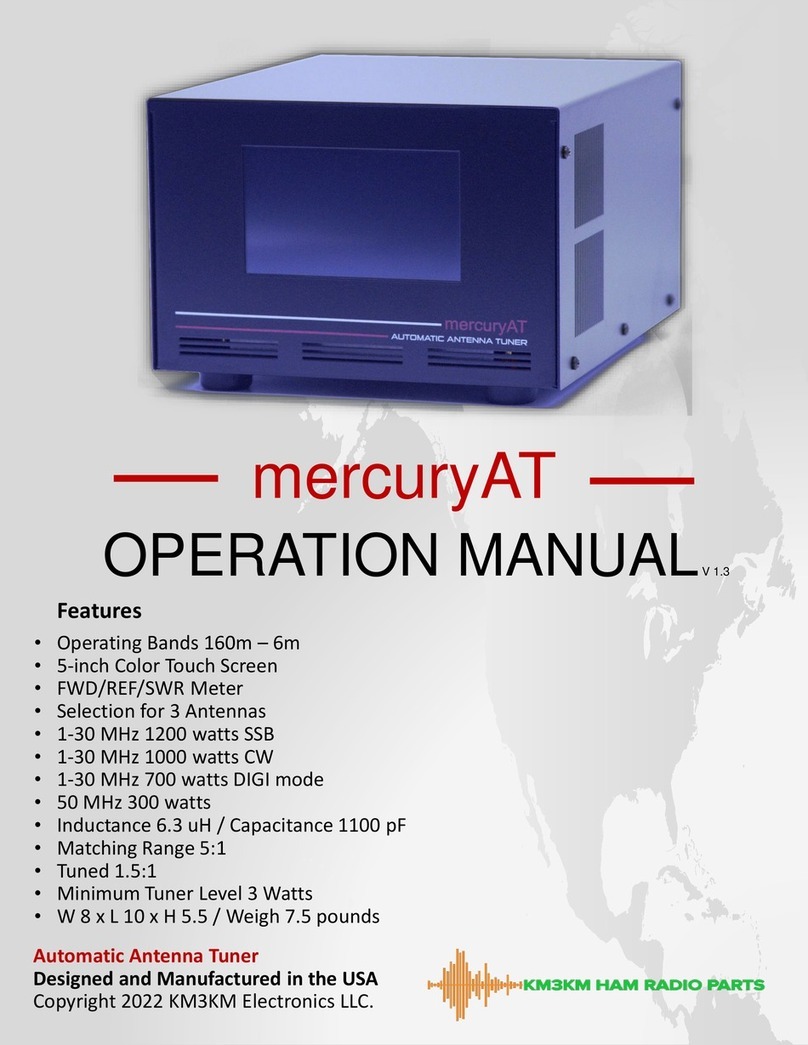
Full Automatic Tuning (Transceiver Control Interface Connected)
1- Turn off or place the amplifier on STANDBY. If you are operating a mercury amp and the PTT
Disconnect cable is installed, this is not necessary.
2- Press the TUNE button on ATS; you will see the Banner (Tune CALL) on the screen and the
tuning process will start automatically. Then one of the Banners described above will be
displayed.
WARNING: NEVER OPERATE AN AMPLIFIER IF AUTO IS CHECKED IN THE SETUP
SCREEN!!!…see page 6.
8
TUNING GUIDE
Semi Automatic Tuning (Transceiver Control Interface Disconnected)
1- Reduce the radio power to 10-20 watts.
2- Turn off or place the amplifier on STANDBY. If you are operating a mercury amp and the PTT
Disconnect cable is installed, this is not necessary.
3- Press the TUNE Button for 2 seconds. You will see the Banner read “Tune CALL” on the
screen.
4- Press PTT in any continuous carrier mode (CW, RTTY, FM, AM)
5- Do not release the PTT until the tuning has completed. It is very Important not to release PTT
as there may be a secondary tuning sequence if the initial tuning has not acquired an
appropriate tune. One of the following Banners will appear on the screen:
IMPORTANT:
•If the input power level is too low the tuning will not run or will have an erroneous result.
•Never tune with more than 40 watts of input to ATS.
•If you transmit a constant carrier with more than 700 watts for more than 5 seconds an
alarm will sound -- if transmission is not halted, severe damaged can occur.
The MERCURY ATS will calculate the loss and indicate if the tuning is appropriate
to handle high power.




























